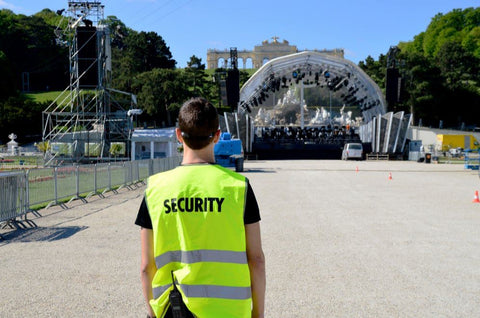Walkie Talkies Explained
Walkie Talkies have been our main business at Radio Shop UK from the start and we supply customers across the UK from our Leeds and London Offices with Next Day delivery available on the majority of radios and accessories.
Here at Radio Shop we offer free advice to our customers and what is the best Walkie Talkie and equipment for the job you need it for.
Walkie Talkies are used for both for leisure and business. No matter how reliant we have become on mobile phones over the last 10 years, Walkie-Talkies offer one thing Mobiles do not.
"Instant communications at the touch of a button to multiple users"
You Simply Push to Talk and instantly connect to other radio users
View All Our Walkie Talkies
What are Walkie Talkies
Walkies talkies are small compact radios that fit in the palm of your hand. Due to their size this makes them portable. The size also means they can be carried easily by all age groups making them suitable for both personal and business use.
The walkie Talkie normally contains the following:
| Microphone | This receives you voice and send it through the transmitter so other people can hear you |
| Speaker | This enables you to hear other users. The radio will receive the signal through the radios receiver unit then produce an audio output through the speaker |
| PTT Button | Push to Talk (PTT) Button is used to make the radio transmit. This stops the radio from constantly transmitting all the time. |
| Antenna | It is used for transmitting and receiving the signal during your use of the walkie talkie. It catches radios waves and turns them into electrical signals and vice versa. Licence Free radios have antennas that cannot be removed or detached from the radio body. |
| Battery | This is used to power the device and they come in variety of sizes and capacities. |
How Do Walkie Talkies Work?
A person would press the Push to Talk Button (PTT) this would make the unit active. They would then speak into the microphone on the walkie talkie. The audio signal would then make its way into the transmitter unit. The voice would then be changed and sent as a radio wave out of the radio through the antenna. This signal would then be received by other walkie talkies using the same channel frequency and settings. The receiving radios would then carry out the reverse of the transmitting radio resulting in the original voice being sent coming out of the speaker.
If the other walkie talkies users, then wanted to reply they could do this in exactly the same way. The only thing to remember is to make sure you release the PTT button when you are finished so others can then talk back.
Who Uses Walkie Talkies?
We have listed a few examples below of how walkies are used and by which Groups. The main thing to remember is walkie talkies can be used for personal or business use. They enable people to communicate with each other over a larger distance than talking or shouting. They enable the customer to speak instantly to other users within range making them ideal for kids playing in the woods to staff in a shoe shop checking stock with someone in the warehouse.
There flexibility of use in any situation is why they are still being used today. Despite advances in technologies and new devices on the market they are so simple to use and save you so much time walking backwards and forwards to speak to someone.
Another common reason they are used is the fact after the initial purchase, costs are minimal and often a one-time investment. There is no airtime, contracts, subscriptions, limits on minutes like a mobile phone or other devices
Types of Walkies Talkies
There are many different brands of walkie talkies which a variety of different features and accessories but when it comes to categories, they are broken into two main ones based on their use. Leisure radios and Business Radios.
Leisure Radios
Leisure radios commonly referred to licence free radios or walkie talkies have been designed to work straight out of the box, they are ideal for camping, hill walking, Skiing, motor sports and road trips across Europe.
They are programmed with 8 or 16 Channels.
They are a low-cost solution and sold in twin or quad packs. They come complete with chargers and often you can install AA batteries in them on the move. They are not designed to be used every day and not to be used for businesses as they a entry level radio.
We have a selection of Licence Free licence radio available for leisure including the most popular release the Motorola T82 Extreme Twin or Motorola T82 Quad Pack.
We also have walkie talkie review on the Motorola Talkabout range and the difference between the models and which one is best suited for you.
Business Walkie Talkies
Commonly Known as Licensed Radios or Two Way Radios
If you business requires communication between staff member wherever they may be located; then radios are the way forward.
They enable a business or government agencies to operate fast and effectively offering instant communications to deal with incidents that may occur. It sometimes becomes overwhelming with the options available we are here to help and honestly give us a call for free expert advice.
Business Radios - By Sector

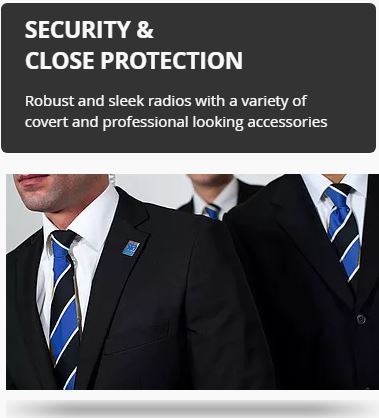
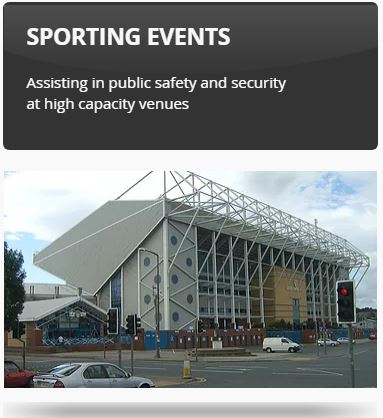

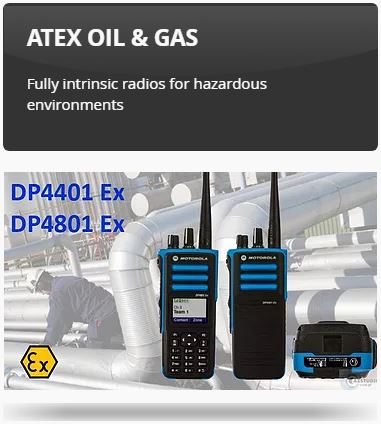


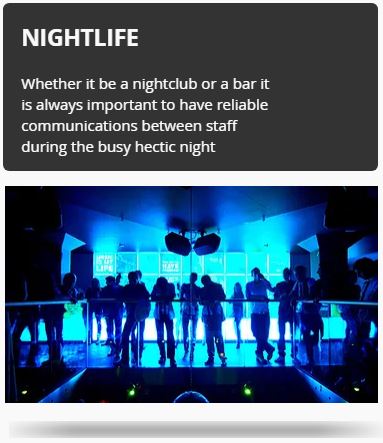


Why Do We Use Walkie Talkies?
Scenario 1:
Schools - There is a fire alarm and all the children and staff are located at different muster points. How do you attend for everyone quick and effectively?
Mobile phones - you must dial each teacher to check they have accounted for their pupils
Walkie Talkies - One press of a button you can talk to all the teachers instantly at the same time.
That is why radios are still used for incident management. They enable to schools to react fast whether that be a fire alarm, calling for a first aider, carrying playground supervision or sadly worse if there is a serious incident involving guns or knives it enables the teachers to lock the school down quickly.
Scenario 2:
Construction Industry - The crane is lifting heavy equipment across the site
How do you notify all your staff? and how do you communicate with the crane driver to tell him to lift and lower?
Walkie Talkie Radios - Allow you to give the crane driver instant instructions and warn other members of staff what is happening at the same time. Communications are 2 Way which also means if any of the crew notice something wrong with the lift, they can highlight the issue before it is too late.
Scenario 3:
Security Industry - whether you are dealing with concerts, nightclubs or bars, incidents occur and the faster you react the better chance you have to protect your clients/customers.
If you need a first aider, if there is violent incident, if you are patrolling a perimeter how do you communicate fast and effectively?
Walkie Talkie Radios enable you to get help and assistance at the touch of a button.
Licence Free Walkie Talkies VS Licensed Radios
Customers often panic about the licences needed to operate two-way radios.
Ofcom have allocated a group of frequencies for two-way radios to use.
Licence Free Walkie Talkies - Use PMR446 or 446MHZ this group of specific frequencies can be used across Europe and are preinstalled in licence free radios. Often different manufacturers use slightly different frequencies to each other in this band to reduce talk over between channels. But licence free radios also come with additional privacy keys settings which change the end of the frequencies slightly to give you more privacy.
Licence Free radios have also had the power reduced to 0.5 Watts to reduce its range to stop cross over talk between the channels.
Licensed Radios - Credit due to Ofcom they have made this process very simple in the UK. You can apply for a licence online starting at £75 valid for 5 Years (only £15 a year) this enables you and your business to operate using different frequencies not used by licence free radios.
The aim is to keep business radios separate from Billy aged 10 who has just been bought some licence free walkie talkies by his mum.
The other advantage is Licensed radios are upto10 x more powerful than licence free. This increase range and the efficiency of the radio working in building with multiple floors and steel and concreate structures.
Display or Non-Display Radios
Walkie Talkies & Two Way Radios normally fall into two categories when it comes to displays
Non-Display - The radio will normally have a channel and volume knob on the top and the rest of the radio will be plain faced. The lack of display normally results in longer battery life as well protecting the radio from damage.
Display - The radio will have a LED or LCD display on the front or top of the radio. The display highlights channel selected, signal strength and battery life. With digital radios it can also highlight lots of other features like caller id, contact list, display text messages and allow you to access the radios main menu.
Radios with Keypads
Walkie Talkies can also be supplied with a variety of button configurations:
No Keypad - The radio is plain faced and blank
Semi Keypad - The radio will have a display and the semi keypad allows you to carry out basic functions programmed into the radio.
Full Keypad - Allows you to send text messages via the radio to other users, you can also add custom content to the radio like new contacts. Full Keypad also allows you to dial radio IDs and phone numbers if you are using a digital network.
Walkie Talkie Batteries
Nickel Metal - This was Motorola's standard battery and to be honest the weakest part to buying a Motorola radio (Motorola now supply you with a LI-ION Battery for free with licensed radios). Nickel Metal can be delivered air freight without any restriction but it cell capacity and operating time is normally less than lithium Ion battery. These batteries also have a memory and life span is shorter.
Lithium Ion - Lithium offers the radio a higher capacity which means you can operate it longer. You can now purchase batteries lasting over 24 hours in operating time. Motorola IMPRES batteries also have the technology to talk to the chargers and communicate to decide how much the battery needs charging or reconditioning to prolong the batteries life.
Sadly, the main downfall to Lithium Batteries is their restrictions to be flown by air. After the Lithium batteries caught fire mid-flight there is now a restriction in place on the amount of Lithium Batteries per an individual box. The limit is currently two batteries per a box.





